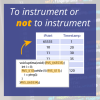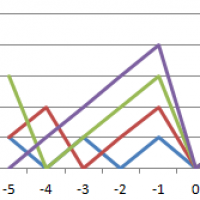This is an old C programmers trick for binary literals in C and is taken from a posting by Tom Torfs. It is particularly useful in a mixed C/Ada environment because Ada allows binary literals and you may wish to move one or more into C when doing optimisation or other development. The trick is to take a binary literal, pretend it is a hex value and then combine the hex nibbles into binary digits.
This particular version provides link time protection against passing in a non-binary value:
#define BINHEX( X ) ( \ (X & 0xEEEEEEEEuL) \ ? undefined( ) \ : ( ( ( (X * 0x1248uL) & 0xF000F000uL ) * 0x1001 ) >> 24 ) \ ) #define _0b( N ) ( BINHEX(0x##N##uL) )
Note that it works for at most 8 binary digits. To get wider values, just concatenate bytes, as in the following example:
const unsigned long val = (_0b(11111111) << 24)
| (_0b(00000000) << 16)
| (_0b(10101010) << 8)
| _0b(00111100);
Or, probably better, rewrite the _0b macro to take 4 bytes:
#define _0b( N3, N2, N1, N0 ) ( \
BINHEX(0x##N3##uL) << 24 \
| BINHEX(0x##N2##uL) << 16 \
| BINHEX(0x##N1##uL) << 8 \
| BINHEX(0x##N0##uL) \
)
so that you can just write:
const unsigned long val = _0b(11111111,00000000,10101010,00111100);
This compares very nicely with the Ada equivalent:
val : constant UInt32_Type := 2#11111111_00000000_10101010_00111100#;

 Rapita System Announces New Distribution Partnership with COONTEC
Rapita System Announces New Distribution Partnership with COONTEC
 Rapita partners with Asterios Technologies to deliver solutions in multicore certification
Rapita partners with Asterios Technologies to deliver solutions in multicore certification
 SAIF Autonomy to use RVS to verify their groundbreaking AI platform
SAIF Autonomy to use RVS to verify their groundbreaking AI platform
 What does AMACC Rev B mean for multicore certification?
What does AMACC Rev B mean for multicore certification?
 How emulation can reduce avionics verification costs: Sim68020
How emulation can reduce avionics verification costs: Sim68020
 Multicore timing analysis: to instrument or not to instrument
Multicore timing analysis: to instrument or not to instrument
 How to certify multicore processors - what is everyone asking?
How to certify multicore processors - what is everyone asking?
 Certifying Unmanned Aircraft Systems
Certifying Unmanned Aircraft Systems
 DO-278A Guidance: Introduction to RTCA DO-278 approval
DO-278A Guidance: Introduction to RTCA DO-278 approval
 ISO 26262
ISO 26262
 Data Coupling & Control Coupling
Data Coupling & Control Coupling
 DASC 2025
DASC 2025
 DO-178C Multicore In-person Training (Fort Worth, TX)
DO-178C Multicore In-person Training (Fort Worth, TX)
 DO-178C Multicore In-person Training (Toulouse)
DO-178C Multicore In-person Training (Toulouse)
 HISC 2025
HISC 2025
















